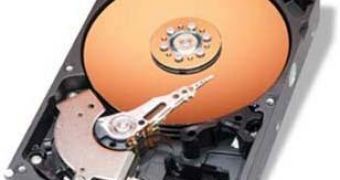It looks as if the entire computer manufacturing industry is having a collective green "fit". It is not something really new, some power regulations were installed long ago, but not until now were they so closely observed and respected. Don't get me wrong: I'm all in favor of a greener and environment friendly computing industry, but some of these things are happening just too fast for me to believe that they are not somehow linked. Maybe it's the fact that the Environmental Protection Agency (also known as EPA) just launched its Energy Star version 4.0 standard that all hardware manufacturers have to obey, at least to some point.
One of the first companies to jump in the boat of a more friendly computing industry was the hard disk drive manufacturer Western Ditgital and according to them "the impetus for change began with Climate Savers Computing Initiative, a consortium of technology companies who've banded together to reduce the PC's power consumption by 50 percent by the year 2010". "When you're talking about those kinds of cuts, you have to go beyond just the CPU and power supply; you have to get into the storage side, too," explains Ted Deffenbaugh, director of product marketing for desktop drives at Western Digital, who was cited by the Web based computer news site PCWorld.
Reducing power consumption in the hard disk drives is not a new idea by a long shot, but the Western Digital company was the first to achieve a major success: it jumped from 13 watts during normal operation to just 8. Such a dramatic decrease in operating power for a hard disk drive can be done only with some major drive re-engineering and redesign and Deffenbaugh admits that "it's always been about more speed, never about doing what we've been doing with less power".
"We set an acceptable bar for performance," Deffenbaugh explains. "And then we worked as hard as we could to lower power in the overall drive, by starting to tune back on some parameters." "Those parameters include adjusting the rotational speed, using bigger data buffers, parking the drive's head, and optimizing how the drive seeks and caches data," according to PCWorld. "When the drive is just spinning, and not doing reading and writing--times when the drive light is not flashing--we anticipate the type of workload that is being generated, and we can pull the head up and off the disk. Now," says Deffenbaugh, "we took our mechanism and through software, we added intelligence about when to pull the head off the disk." That translates into power savings as the disk heads are already at their proper place when data is requested. "That's one of the ways we can drop power when the drive is not actively seeking or reading data."

 14 DAY TRIAL //
14 DAY TRIAL //